The Cabin Crews
United Air Lines was the first airline to introduce female cabin attendants, in 1929, but other airlines were not in a hurry to follow suit. The main qualification was to be a qualified nurse, because the fear of flying was not uncommon, and passengers often needed attention to calm the nerves as well as to calm the stomachs, resulting from the uneven, and sometimes roller-coaster-like rides in the 100-mph Ford TriMotors, which could not always avoid turbulent weather.
Reluctance to Hire Women
One reason why the airlines were reluctant to hire women as stewards was that the idea was thought to be somewhat undignified (in an age when women were still thought to be homebuilders rather than wage-earners). The work was strenuous. Pan American did not hire women cabin attendants until the end of the Second World War, because of the long journeys. Just as the airlines followed railroad practice in many aspects of their operations, so it was with cabin attendants, with stewards emulating the Pullman Car service on the express trains— with the exception that airlines still employed white staff almost exclusively, from the top executives and flying crew to all who came into contact with the public.
T. W.A. Hostesses
T. W.A.’s stewardesses were called hostesses, to reflect the nature of the job more graciously, and implying that they did more than just bring round the drinks. The first group graduated at Kansas City on 6 December 1935, and were assigned to the Douglas DC-2 flights.
T. W.A. provided the trainees with uniforms and was the only major airline to do so. The jackets carried a patch that read “TWA Student Hostess,” a practice that implied that they should comport themselves in training as would be expected when they started to work on the line.
Airborne Memories


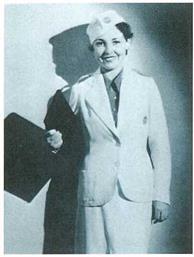
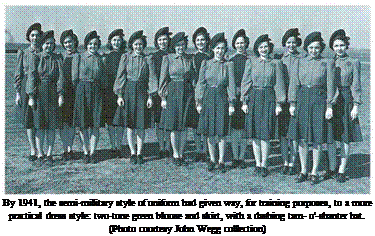


![]()
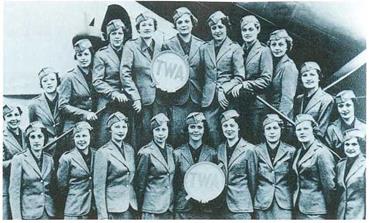 A camaraderie emerged that survived into the retirement years. This has taken the form of former flight attendant groups, such as Clipped Wings and Silver Wings. They meet regularly and keep in touch through newsletters, chapter meetings, and annual conventions. Clipped Wings produced a handsome volume, Wings of Pride, honoring a great profession. The Clipped Wings maintain a ‘fashion archive’ of T. W.A. uniforms worn throughout the years and enjoy presenting fashion shows, in which members model their own uniforms from bygone days.
A camaraderie emerged that survived into the retirement years. This has taken the form of former flight attendant groups, such as Clipped Wings and Silver Wings. They meet regularly and keep in touch through newsletters, chapter meetings, and annual conventions. Clipped Wings produced a handsome volume, Wings of Pride, honoring a great profession. The Clipped Wings maintain a ‘fashion archive’ of T. W.A. uniforms worn throughout the years and enjoy presenting fashion shows, in which members model their own uniforms from bygone days.
 |


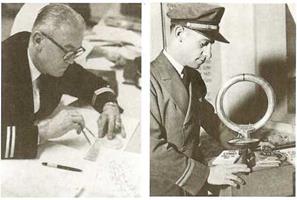

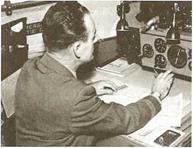

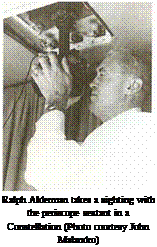
The Importance of Navigation
During the earliest years of commercial flying, the importance of finding the way accurately was soon made clear. Too many pilots were killed simply because they were too busy trying to keep their machines in the air, especially in conditions of zero visibility. A compass and air-speed indicator were simply not enough.
As time went on, improvements were made, at first on the ground, with the legendary “Lighted Airway,” a series of high-intensity beacons, acting like street lamps for the early airline pilots. Then came better radio and radio ranges by the early 1930s, and then ADF (Automatic Direction Finder) in the latter 1930s. With the improvement of airliners from the Ford to the DC-3, the need for accuracy was becoming critical, as there was little time to find alternate places to land. Even the DC-3 needed something better than a small field surrounded by trees.
The Navigators
Until the outbreak of the Second World War, the only airline that needed skilled navigators was Pan American Airways, as it was the only operator privileged to operate long-distance trans-ocean flights. The exigencies of war, however, demanded “all hands to the plough” and T. W.A., possessing the only four- engined landplanes in domestic service, was called upon to transfer its Boeing 307 Stratoliners to the United States Army Air Forces (USAAF) for important overseas logistics work.
T. W.A. hired the experience where it could find it: from the merchant navy, even from Pan American. The new members of the flight deck quickly assumed the vital role, in which their level of importance was such that, although only ‘two- ringers,’ no wise captain would take off without the navigator’s approval. Also, with a landplane such as the 307, it was not enough to get close. Pan Am’s flying boats could, at a pinch, alight in a stretch of smooth water if it missed the exact destination flying boat base. When the 307 entered service, a mere handful of airports in the world had hard-surfaced runways, and few alternate airfields. T. W.A. ’s navigators, therefore, had to be right on target. As described on pages 50 and 51, they won their spurs on the two Atlantic routes. Finding Ascension Island was a work of extreme precision. But few diversions ever had to be made.
Pressurization Problem
For efficient observations with a sextant or octant, the long-range airliners were fitted with an astrodome, a circular glass protuberance on top of the fuselage which allowed the navigator to
prop himself into the circular aperture, and take the necessary sightings, either by day or by night. But the situation was different with pressurized types.
The Boeing 307 gave no trouble, as the pressurization differential was small. With the post-war Lockheed Constellations, however, the pressure differential was higher, and this resulted in tragedy. George Hart was on a trans-Atlantic flight in 1948, taking sextant readings in the astrodome, when he was sucked out when the glass canopy failed. Thereafter the navigators were supplied with a well-secured harness which they wore when using the astrodome. This was later eliminated with the introduction of a periscope sextant (see illustration).
End of a Profession
During and immediately after the Second World War, tremendous advances were made in navigational technology, aided by improvements in radio and especially radar. The introduction of doppler, a quadrantal echo-measuring device, was the harbinger of further developments. Then the arrival of INS (Inertial Navigation System), which combined the precision of gyroscopes with accurate accelerometers, sounded the death – knell for navigators. The accurate readings on the pilots’ instruments made them redundant. T. W.A. retired its last navigator in the fall of 1964. With today’s GPS (Global Positioning System), thanks to the almost incredible accuracy of satellite monitoring, even a two-man crew can easily handle both the flying and the navigating.
The Engineers
Another profession which has been usurped by the march of technology is that of the flight engineer. When the four – engined landplanes were introduced, they carried an engineer, like Pan American’s Clipper crews, to monitor fuel consumption and balance, electric power and distribution, hydraulics, pressurization, and engine performance. The big airliners were sensitive to the balance of fuel in the tanks, an imbalanced weight of which would affect the flying characteristics of the aircraft. But except for the bewildering complexity of very advanced aircraft such as the supersonic Concorde, all the engineers’ functions have been taken over by the computerized “glass cockpits’ which—especially with the trend away from four-engined types to twins—are self-monitoring and self-compensating. T. W.A.’s last flight engineers were retired in 2000, along with the last Boeing 727s. Today’s airline pilots need only their precision instruments and the ability to stay awake, or at least alert.










